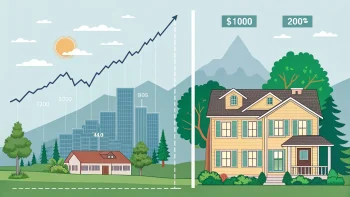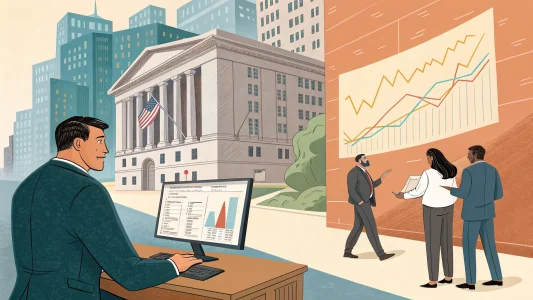Investing is a strategic game, a delicate balance of understanding market trends, risks, and potential returns. Every investor’s ultimate goal is to find an investment that not only outperforms stocks but also carries less risk. The holy grail of investing is finding an investment that increases in value even when stocks sell-off. This article explores the concept of downside risk, the importance of identifying absolute needs, and the potential of private infrastructure as a promising investment avenue.
Table of Contents
ToggleGrasping the concept of downside risk
Downside risk refers to the potential loss in value of an investment. It’s the uncertainty that an investment will decline in value or, even worse, become worthless. It’s a fundamental concept that every investor must understand to successfully navigate the volatile world of investing.
Take Bitcoin, for example. This popular digital currency has outperformed stocks but has also experienced significant volatility. Since 2011, Bitcoin’s value has been more than halved eight times. This illustrates the downside risk associated with investing in Bitcoin. While the potential for high returns is attractive, the risk of substantial losses is a critical factor to consider.
View this post on Instagram
A post shared by Taylor Sohns – CFP®, CIMA®, MBA – Finance (@lifegoalinvestments)
The importance of identifying absolute needs
Identifying absolute needs is the key to limiting downside risk and achieving consistent returns. An absolute need refers to an essential and constant demand, regardless of market conditions. Investing in sectors or industries that cater to these absolute needs can provide stability and consistent returns.
Today, one such absolute need is energy production. With the rapid advancement of technology, the demand for energy is skyrocketing. For instance, it is projected that in five years, Artificial Intelligence (AI) will consume three times more energy than all of New York City. This increasing demand for energy underscores the importance and potential of investing in energy production.
The potential of investing in private infrastructure
So, how can one invest in this growing need for energy production? The answer lies in private infrastructure. Private infrastructure refers to assets owned and operated by private entities, such as power plants, pipelines, and renewable energy facilities.
Over the past 15 years, private infrastructure has not only outperformed stocks but has done so with significantly less risk. This makes it an attractive investment option for diversifying their portfolio and minimizing downside risk.
Diversification: A powerful tool
Private infrastructure is also a powerful tool for diversification. Diversification is a risk management strategy that involves spreading investments across various financial instruments, industries, and other categories to minimize exposure to any single asset or risk.
In the past 15 years, private infrastructure has increased in value during the ten worst quarters for stocks. This demonstrates the resilience of private infrastructure investments and their ability to provide a hedge against stock market volatility.
Conclusion: The power of private infrastructure
At Lifegold, we understand the importance of diversification and the potential of private infrastructure. We provide our clients with access to private markets, allowing them to invest in sectors that cater to absolute needs like energy production.
Investing is not just about chasing high returns; it’s about understanding the risks, identifying absolute needs, and making strategic decisions. Private infrastructure presents a promising investment avenue that has historically outperformed stocks with less risk. It’s the ultimate gangster of diversification, providing a hedge against stock market volatility and offering consistent returns.
Investing in private infrastructure is not just about financial gain; it’s about contributing to essential sectors like energy production that are crucial for our society’s growth and development. So, if you want to diversify your portfolio, minimize downside risk, and invest in an absolute need, private infrastructure could be the perfect fit for you.
Frequently Asked Questions
Q. What is downside risk?
Downside risk refers to the potential loss in value of an investment. It’s the uncertainty that an investment will decline in value or, even worse, become worthless. It’s a fundamental concept that every investor must understand to navigate the volatile world of investing successfully.
Q. What is an absolute need in investing?
An absolute need refers to an essential and constant demand, regardless of market conditions. Investing in sectors or industries that cater to these absolute needs can provide a level of stability and consistent returns. One such absolute need today is energy production.
Q. What is private infrastructure?
Private infrastructure refers to assets owned and operated by private entities, such as power plants, pipelines, and renewable energy facilities. Over the past 15 years, private infrastructure has not only outperformed stocks but also significantly reduced risk.
Q. How does diversification work in investing?
Diversification is a risk management strategy that spreads investments across various financial instruments, industries, and other categories to minimize exposure to any single asset or risk. Private infrastructure is a powerful tool for diversification.
Q. Why should I consider investing in private infrastructure?
Investing in private infrastructure is not just about financial gain; it’s about contributing to essential sectors like energy production that are crucial for our society’s growth and development. It presents a promising investment avenue that has historically outperformed stocks with less risk, providing a hedge against stock market volatility and offering consistent returns.

















